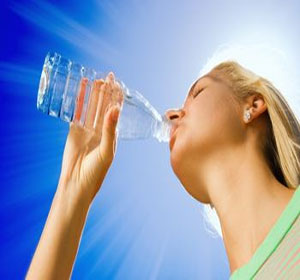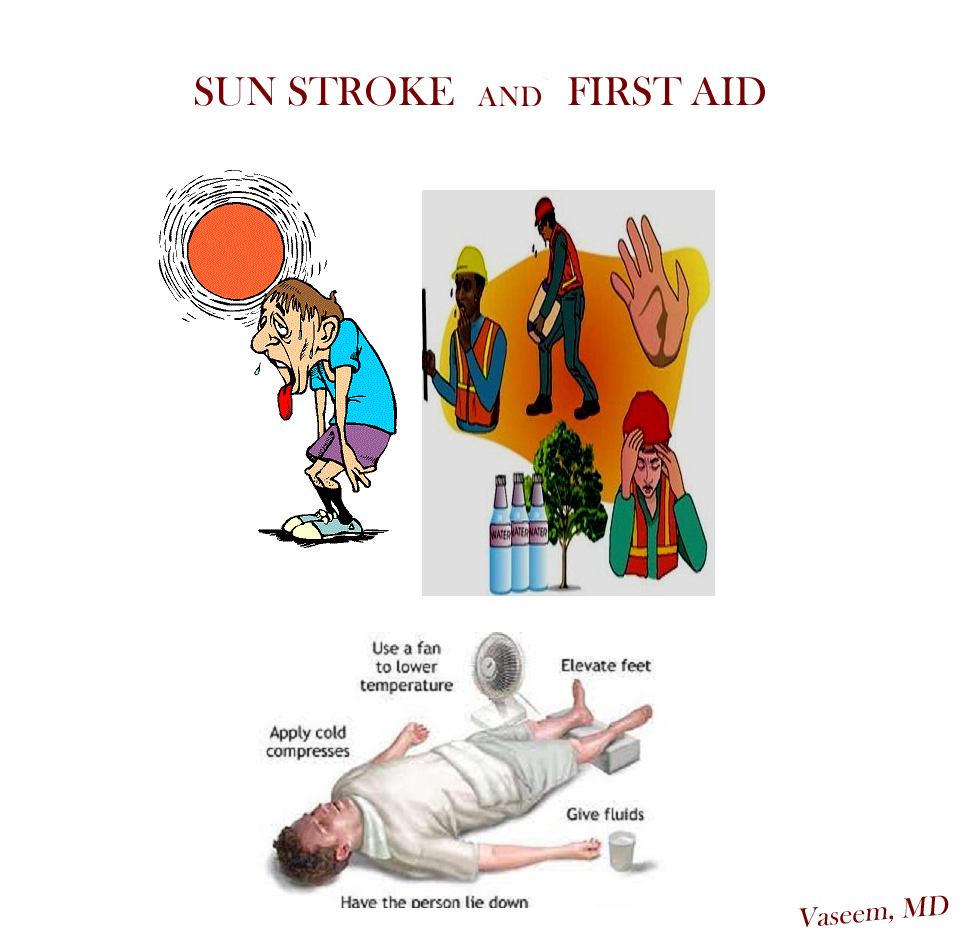
Nowaday, our current weather is very hot. Our health ministry has been promote about the heatstroke problem. The heatstroke occurs when your body’s thermostat cannot keep your body cool as body relies on water evaporation to stay cool.
In dry air like current day, sweat evaporates easily, quickly cooling your body but in very humid air, sweat does not evaporate. It may collect on the skin or run off your body without affecting your body’s climbing temperature.

Extremely warm and humid temperatures can quickly overwhelm your body’s cooling system—particularly when the air is not circulating. When sweating can no longer keep you cool, body temperature quickly rises, causing the symptoms of heat-related illness.
Sunstroke is a type of heatstroke. Heatstroke is a condition that occurs after exposure to excessive heat. In sunstroke—also called heat illness, heat injury, hyperthermia, heat prostration, and heat collapse—the source of heat is the sun. Other types of heatstroke occur after exposure to heat from different sources.
Heatstroke—including sunstroke—is considered to be the most severe of the heat-related illnesses. Heat can have punishing effects on your body. After excessive exercise or physical labor, your body can overheat, and you may suffer heat exhaustion. Heat cramps occur after excessive loss of water and salt; usually resulting from excessive sweating, or after strenuous exercise or labor. During heat exhaustion and heat cramps, the heat-controlling system is still intact, but can be overwhelmed. If this happens, heat exhaustion can progress to heatstroke, a life-threatening medical condition. In severe cases, heatstroke can even cause organ dysfunction, brain damage, and death.
Sunstroke is caused by a failure in your body’s cooling system. When its cooling system fails, your body is overwhelmed by excess heat; this is when sunstroke occurs. Anything that disrupts your body’s thermostat can increase the likelihood of sunstroke. These may include such factors as underlying medical conditions, medications, physical characteristics, or age.
Dehydration contributes to sunstroke. Dehydration happens when your body excretes more water than it takes in. For example, increased water loss through excessive urination is a common side effect of caffeine, alcohol, and many prescription and over-the-counter medications. When the water supply in your body is low, cells begin to pull water from the bloodstream, forcing organs to work harder. Dehydration can also affect the skin’s ability to cool the body efficiently. The heart must pump an adequate supply of blood to the skin in order for the skin to cool the body. When you are dehydrated, the blood’s volume is reduced, so the cooling process becomes less effective. The taxing effect on the body escalates into the symptoms of heat-related illness.
Prolonged exposure to the sun contributes to sunstroke. When body fluids are not adequately replenished, sun exposure can cause rapid dehydration. Even on mild or overcast days, the sun can have dangerous health effects. The heat index is a measure calculated by the National Weather Service. It indicates how hot it “feels” outside in the shade when both the air temperature and the relative humidity are considered. In the direct sun, the heat index rises even higher. The following heat indices are associated with these heat-related conditions.
Source :- PDR Health

Leave a Reply